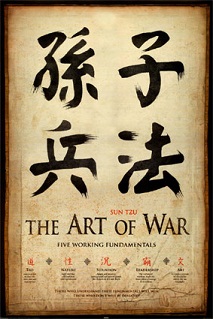By Vicky Davis, Tom Marin, and Paul E. Vallely
On March 3, 1993, two months after taking office, President Bill Clinton announced the National Performance Review. On the same day, the White House Office of Domestic Policy issued a press release that began with a quote from Bill Clinton followed by the announcement that Al Gore was to lead a revolution:
“The people demand and deserve an active government on their side. But they don’t want a government that wastes money, a government that costs more and does less. They voted for change. They wanted a literal revolution in the way government operates, and now, you and I must deliver.”
– President Bill Clinton, Remarks to the Cabinet, February 10, 1993
Today, the President has asked Vice-President Gore to lead a revolution in Washington that will change the way government does business. The American people deserve a government that treats them like customers…
A few months later, a report was produced from the National Performance Review and the next phase of the project began with a rename. The National Performance Review became the ‘Reinvention of Government’. With that, the revolution announced on March 3, 1993 began.
Al “Mussolini” Gore led an IT-centered revolution with the mandate to “Do More with Less”. The objective was to redesign the systems of government in the corporate model. The rulebook for ethics in government was virtually shredded and over the next eight years, legal constraints on government agencies were eliminated allowing the government employees, IT Consulting firms and representatives from the largest corporations to collude in the redesign of government systems.
Government employees were given the mandate to consider the corporations they formerly regulated as “partners” and “customers” in the redesign effort. Not surprisingly, the overhead functions of the large corporations were aggregated, normalized and passed off to the public sector. The result of this incestuous relationship between government and corporations was that the citizens and small businesses became the targets for regulation as captives in a “market” ruled by corporate titans. In redesigning the systems of government, they changed the nature of the government.
The easiest place to see the Invisible Hand is in the integrated school-workforce development system: The National Human Resource Management System. The schools were repurposed to become the supply chain for workers – incorporating “worker skills” into the curriculum and vocational training beginning at the high school level and in some states at the junior high school level.
The old state unemployment office was given a new mission: One Stop Shop – tasked with doing everything that has to do with the “development” of the market captives to keep them working. One Stop Shops list jobs coordinate training and maintain “performance records”. Essentially, this system is the aggregated and externalized personnel department for the corporate collective.
The universities were repurposed to become the Research and Development departments for the corporate collective. Product commercialization and “small business development” centered on technology-oriented businesses (anything with a chip) is connected to the universities by “partnership agreement” through Innovation Centers. The Innovation Centers provide subsidized facilities for the start-ups, business advisors with connections to venture capitalists, academic advisors with connections to the government grant and patent systems.
The above is the ‘New Economy’ sometimes called the Knowledge-based economy. The idea is that R&D and product commercialization can be commodified into an assembly line process. What it actually produces is an economic mirage – essentially the Invisible Hand produced a small business bubble machine – exemplified by the dotcoms of the late 1990’s.
If the start up business is a winner, the venture vultures win – and they win big but they never lose. The Reinvention of Government project included financing mechanisms through tax credits and securitization under New Markets Initiatives implemented by Treasury Secretary Robert Rubin, former employee of Goldman Sachs.
There are a number of elements to the design of the “New Economy” all of which combine to form a System. Apparently, the Chinese are very good at systems thinking from a holistic approach and/or the venture vultures are very good at turning a loss into a profit – or both but regardless, the opportunity was created for Communist Chinese infiltration of the American economy including infiltration of our critical infrastructure through the university system – Small Business Bubble Machines. The story of Hoku Scientific is a classic case in point. The history of Hoku’s beginnings combined with the method of the Chinese takeover and the timing of their appearance on the scene are straight out of Sun Tzu’s Art of War.

